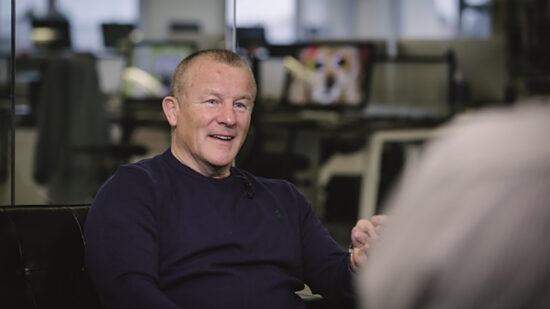In 2022, we identified that a combination of loose monetary policy, supply chain regionalisation, rising post-pandemic demand, and the level of unspent savings accumulated in lockdowns would boost inflation everywhere, especially in the US.
The structural reversal of disinflationary demographic forces that suppressed prices and labour costs for three decades is underway, writes Geoff Cook, chair of Mourant Consulting.
Britain has already experienced turbulence in financial markets as its government sought to pursue growth while the Bank of England (BoE) had commenced quantitative tightening, with government and prudential policy moving in opposite directions. The BoE was quickly obliged to select the reverse gear in response to prop up the Gilt market.
The risks to global financial stability in 2023 are high, with the Federal Reserve, the ECB and the Bank of Japan obliged to address rising inflation and to withdraw the cheap money that has fuelled investment for the last two decades. Such a rapid move after decades of low rates and quantitative easing is fraught with risk, and further significant market events cannot be discounted.
Sticky inflation
Modest inflation, about 2% -3%, is generally accepted to support modest price rises, growth, and investment. The BoE sets an inflation target of 2% to keep inflation low and stable.
According to the BoE, if inflation is too high or it moves around a lot, it’s hard for businesses to set the correct prices and for people to plan their spending. But if inflation is too low or negative, some people may put off spending because they expect prices to fall. Although lower prices sound like a good thing, if everybody reduced their spending, then companies could fail, and people might lose their jobs due to deflation.
Sticky inflation refers to a phenomenon where prices do not adjust quickly to changes in supply and demand, leading to persistent inflation. Sticky inflation has been a concern for many central banks, making it difficult to control inflation. When prices are sticky, inflation can persist even if the economy operates below its potential level.
Recent experiences of sticky inflation
The covid-19 pandemic significantly impacted the global economy, leading to disruptions in supply chains and shifts in consumer behaviour. This resulted in significant changes in inflation patterns, with some prices falling while others were rising. For example, in the early stages of the pandemic, there was a substantial increase in demand for certain goods, such as hand sanitisers and face masks. This led to shortages and a surge in prices for these products.
However, as the pandemic continued, demand for other goods and services, such as travel and hospitality, declined significantly, leading to a price fall. Despite these changes, some prices remained sticky, leading to persistent inflation. For example, food and household supplies prices have remained high due to supply chain disruptions, increased demand, and higher transportation costs.
The US Experience
The US Federal Reserve (Fed) has been closely monitoring inflation and taking measures to control it. In the US, inflation has been consistently higher than the central bank’s target of 2%.
The Fed initially attributed this to transitory factors, such as supply chain disruptions, and expected inflation to return to its target level in the medium term.
However, inflation has proven to be stubbornly high, and many commentators believe that the problem is more structural due to the overstimulation of the US economy in the post-pandemic era and due to a reduction in the workforce as many older people have not returned to the workplace.
This has boosted wages due to a shortage of workers and empowered labour groups to demand better terms.
The UK experience
The BoE has also been closely monitoring inflation and taking measures to control it. In the UK, Inflation has been above the central bank’s target of 2% for some time, and the BoE expects it to remain elevated in the short term.
One of the factors that may contribute to sticky inflation in the UK is the pricing behaviour of firms. In the UK, many firms use a pricing strategy known as “cost-plus pricing,” where prices are set based on production costs, creating a situation where prices adjust slowly to changes in demand or supply, leading to persistent inflation.
To address this issue, the BoE has taken several measures, such as reducing its bond purchases and signalling that it may continue to raise interest rates. The central bank hopes these measures will help control inflation by reducing demand for goods and services.
The war in Ukraine
The ongoing war in Ukraine and related food and energy insecurity are additional factors that have caused inflation to spike.
The conflict has disrupted supply chains and increased transportation costs, leading to shortages and price increases for goods and services.
In the case of Ukraine, the conflict has disrupted the country’s agricultural sector, which is a significant contributor to global food supply. Farmers have been unable to access their fields and have faced difficulties transporting their products, leading to shortages and price increases.
This has significantly impacted Ukraine’s economy, as the agricultural sector is a substantial source of employment and export revenue.
In addition, the conflict has disrupted energy supplies, leading to shortages and price increases for natural gas and electricity. Europe relied heavily on Russia for its energy supplies, and tensions between Russia and the EU have led to disruptions in energy supplies.
Where next for inflation?
Inflation will likely peak in 2023 and then fall back, causing the pandemic-driven issues to abate.
Still, a continuation of the war in Ukraine and the structural change in labour supply already referenced will mean that inflation will not return to the super-low levels of the last thirty years.
Success in driving down inflation is not assured, and if wage rises in double figures become embedded, core inflation will take off and might scale new heights.
The challenge of high inflation for the business world is making business and investment decisions less predictable.
IFCs
So far as international finance centres and cross-border investment are concerned, there is the potential for slowing transactions while investors appraise the new environment and the impact on expected returns.
Investment practitioners who have never experienced severe inflation will see new pricing and revaluation strategies added to the customary cost-efficiency playbook. Companies will re-learn how to pass on inflationary price increases. And underlying valuations will benefit from an inflationary uplift at the exit. On acquisitions, target companies’ degree of price elasticity for goods or services will become a more significant factor in target selection.
The agile investor will utilise volatility to hold or improve exit multiples. And given the drive to lessen carbon fuel dependency further, renewables investment looks set for a further significant boost.
Debt, traditionally an essential building block of private equity in leveraging the equity component in funds, will already have received attention through debt restructuring. Fixing long-term debt costs while generating higher alpha through greater pricing power and higher exit valuations can increase rather than diminish returns. The fleet-footed will seize the opportunity. In every cloud, there is a silver lining. So, firms will adapt and reposition for the new environment at the investment level.
Still, IFC firms will need to act to mitigate the effects of an inflationary environment. Cost increases will arise through inflationary pressures, but they are not inevitable. Firms investing in digital automation, AI, data analytics, and machine learning will see cost-reducing inflation offsets through productivity gains. Those who attract and retain the best talent will justify an inflation-adjusted price point by delivering high-quality expertise and the best service levels.
Inflation may be on the march, but there is always the opportunity for the professional investor and the service provider that is both contrarian and agile to mitigate its worst effects and to harness the opportunities it presents.
This article was written for International Adviser by Geoff Cook, chair of Mourant Consulting.








